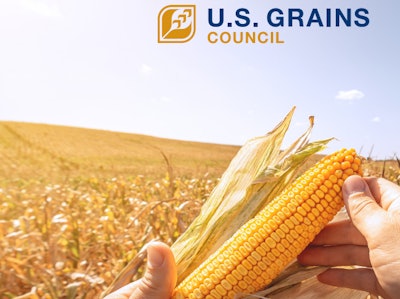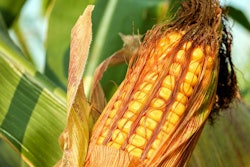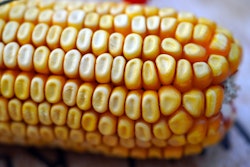
According to the U.S. Grains Council’s (USGC’s) 2022/2023 Corn Harvest Quality Report, the 12th annual corn quality survey published globally, the 2022 U.S. corn crop entering the market channel has a higher average test weight, higher protein concentration and lower total damage relative to each quality factor’s average of the previous five crops.
“Through trade, USGC is committed to the furtherance of global food security and mutual economic benefit and offers this report to assist buyers in making well-informed decisions by providing reliable and timely information about the quality of the current U.S. crop,” said Kurt Shultz, USGC senior director of global strategies.
“This year’s supply allows the U.S. to remain the world’s leading corn exporter and will account for an estimated 29.9% of global corn exports during the upcoming marketing year.”
Weather factors into this year's corn quality
Cool temperatures early in the year caused delays in planting but May’s warm weather allowed farmers to catch up and the crop has since matured at a near-average pace. Areas of the western Corn Belt continued to endure higher heat and lower than expected precipitation.
These factors contributed to reduced yields in this year’s crop but accelerated maturation and the clear weather ensured a timely harvest, which has maintained crop quality.
The average aggregate quality of the representative samples tested was better than the grade factor requirements for U.S. No. 1 grade. The report also showed that 81.5% of the samples met the grade factor requirements for U.S. No. 1 grade and 95.3% met the grade factor requirements for U.S. No. 2.
Corn sample collection for report
The report is based on 600 yellow corn samples taken from defined areas within 12 of the top corn-producing and exporting states.
Inbound samples were collected from local grain elevators to measure and analyze quality at the point of origin and provide representative information about the variability of the quality characteristics across the diverse geographic regions.
2022 crop compared to 2021's crop
This year’s crop showed higher test weight than 2021; higher average total damage than 2021 but lower than the five-year average and the same average moisture content as 2021 and the five-year average. The crop also showed higher average protein concentration than 2021 and the five-year average.
Nearly all of the samples tested below the U.S. Food and Drug Administration (FDA) action level for aflatoxins and 86.1% of the samples tested below the 5.0 parts per million FDA advisory level for deoxynivalenol (DON) or vomitoxin. Of the samples tested for fumonisin, 98.9% tested below the FDA’s strictest guidance level of 5.0 parts per million, a slightly higher proportion than in 2021.
The 2022 U.S. corn crop checks in at 353.84 million metric tons (13,930 million bushels) and the average yield is 10.81 metric tons/hectare (172.3 bushels per acre), according to the U.S. Department of Agriculture (USDA) World Agricultural Supply and Demand Estimate.

















